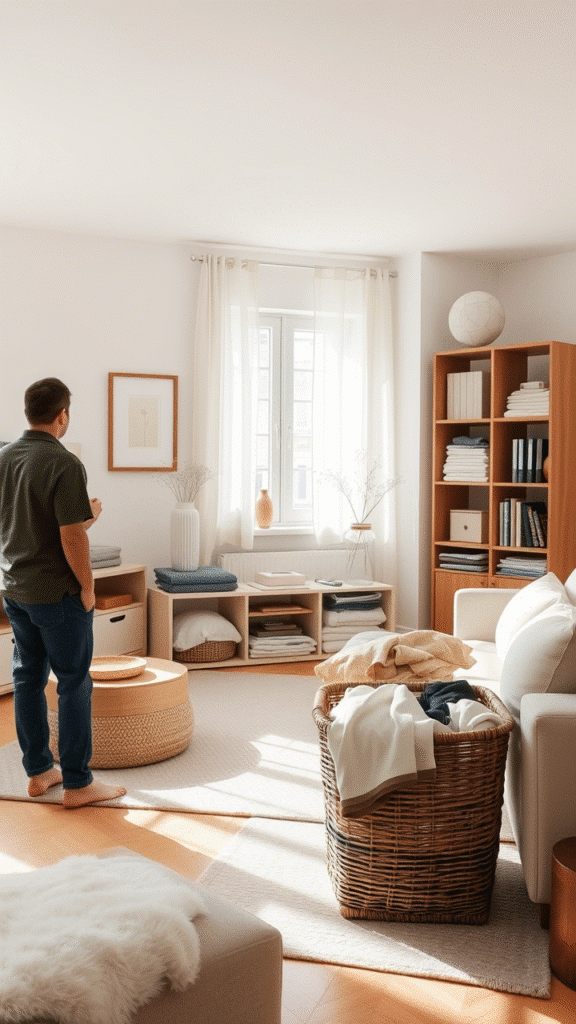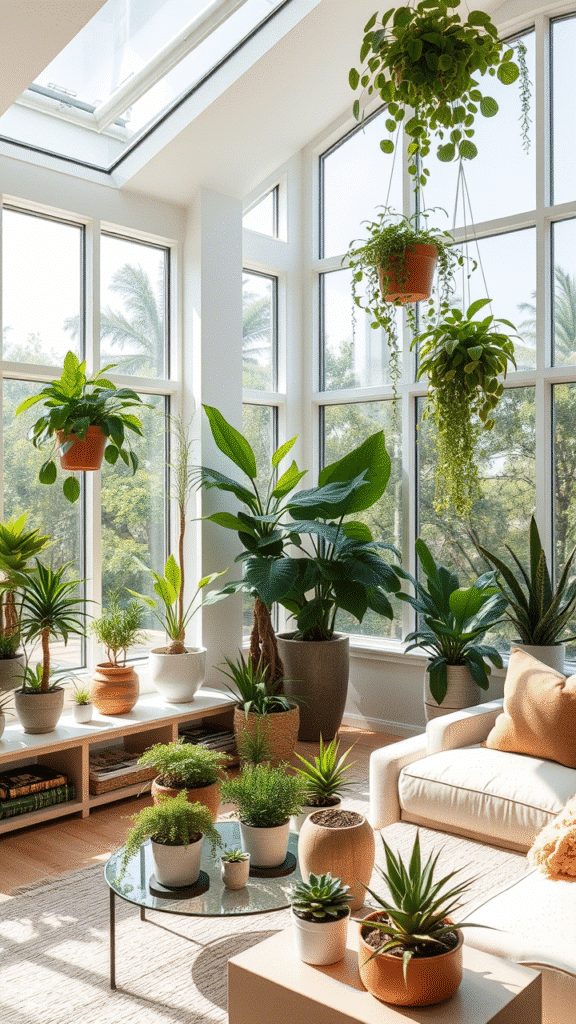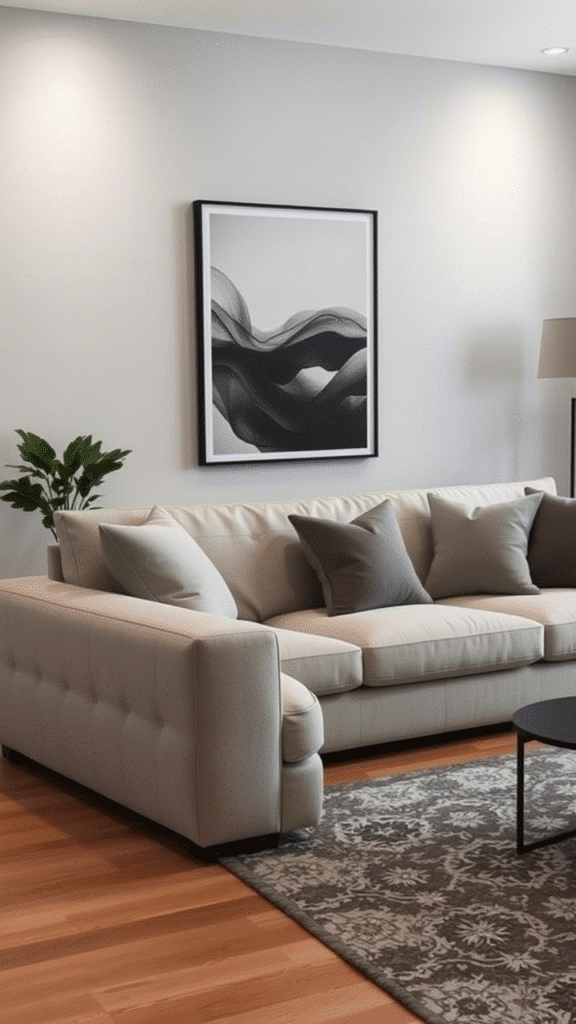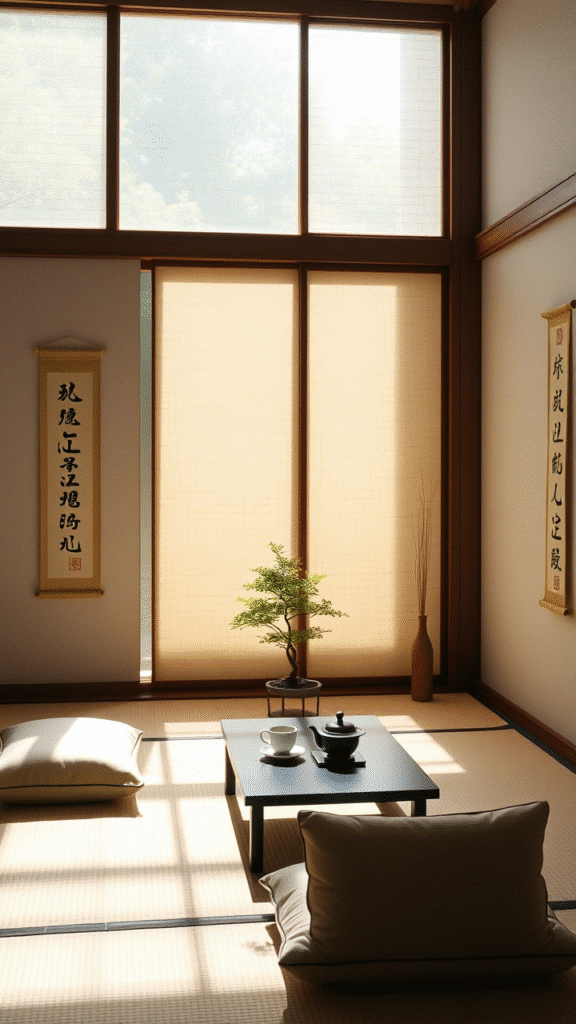In a world where excess often overwhelms, embracing a minimalist living room offers a sanctuary of calm, functionality, and understated elegance. This guide delves into 22 thoughtfully curated ideas that embody the essence of minimalist design—where less truly becomes more.
Understanding Minimalist Living Room Design
Minimalism isn’t merely about reducing clutter; it’s about intentionality. Every piece in a minimalist living room serves a purpose, contributing to a harmonious and serene environment. The focus is on clean lines, neutral color palettes, and functional furniture that together create a space of tranquility and order.
1. Neutral Color Palette with Earthy Accents
A minimalist living room often features a neutral color scheme—whites, beiges, and soft grays—as its foundation. These tones reflect natural light, making the space feel airy and expansive. To add warmth and depth, incorporate earthy accents like sage green, terracotta, or muted blues through textiles or decor items.
2. Multi-Functional Furniture
In minimalist design, furniture isn’t just about aesthetics; it’s about functionality. Opt for pieces that serve multiple purposes, such as modular sofas that can be reconfigured, coffee tables with hidden storage, or ottomans that double as seating. This approach maximizes space and reduces clutter.
3. Incorporating Natural Materials
Introduce warmth and texture by using natural materials like wood, stone, and linen. Light oak or birch wood furniture adds a cozy touch, while stone elements like marble or granite can serve as stylish accents. Linen cushions and cotton throws provide comfort and emphasize the concept of naturalness.
4. Decluttering for Clarity

A minimalist living room thrives on simplicity. Regularly assess and remove items that don’t serve a functional or aesthetic purpose. This practice not only creates a visually appealing space but also promotes mental clarity and reduces stress.
5. Clean Lines and Open Spaces
Embrace furniture with straight edges and simple silhouettes. Avoid overly ornate pieces that can make the space feel crowded. An open floor plan enhances the sense of space, allowing for easy movement and a feeling of freedom.
6. Layered Lighting
Lighting plays a crucial role in setting the mood of a minimalist living room. Combine different light sources—overhead lighting for general illumination, task lighting for reading or work, and ambient lighting for creating a cozy atmosphere. Use sheer curtains to allow natural light to fill the space during the day.
7. Minimalist Art and Decor
Choose art pieces that are simple yet impactful. Abstract paintings, monochrome prints, or line drawings can serve as focal points without overwhelming the space. Keep frames simple—black, white, or natural wood—to maintain a cohesive look.
8. Adding Greenery

Plants not only purify the air but also bring life to a minimalist living room. Select low-maintenance plants like snake plants, succulents, or a fiddle leaf fig. Use simple pots in neutral colors to complement the overall aesthetic.
9. Textural Contrast
Introduce subtle textures to add depth and interest. A woven wool rug, linen throw blanket, or ceramic vase can break up the monotony of flat surfaces and add a tactile dimension to the room.
10. Warmth Through Wood Accents
Wooden elements bring a sense of warmth and natural beauty. Incorporate wooden coffee tables, shelving units, or accent chairs to soften the minimalist aesthetic and create a welcoming atmosphere.
11. Concealed Storage Solutions
To maintain a clutter-free environment, invest in furniture with hidden storage. Ottomans with compartments, side tables with drawers, or built-in shelving units can help keep everyday items out of sight, preserving the minimalist look.
12. Monochrome Accents

While the base palette remains neutral, incorporating varying shades of a single color can add depth and interest. Consider using different tones of gray or beige for cushions, throws, or rugs to create a cohesive and sophisticated look.
13. Creating a Sense of Calm
Minimalism is about more than just aesthetics; it’s about creating a space that promotes relaxation and mental clarity. Keep surfaces clear, choose calming colors, and incorporate elements that bring peace and tranquility to the room.
14. Mirrors to Enhance Space
Strategically placed mirrors can make a small living room feel larger by reflecting light and creating the illusion of depth. Choose simple, frameless designs or frames that match the room’s color palette to maintain the minimalist aesthetic.
15. Baskets and Trays for Organization
Use woven baskets or simple trays to organize small items like remote controls, magazines, or blankets. These functional accessories help keep the space tidy while adding a touch of texture and warmth.
16. Layering Textiles

Layering different textiles can add comfort and visual interest without cluttering the space. Combine linen cushions with a wool throw or a cotton rug to create a cozy and inviting atmosphere.
17. Statement Furniture Pieces
While the overall design is minimalist, a single statement piece can add personality to the room. Consider a sculptural chair, a unique coffee table, or an artistic light fixture that serves as a focal point.
18. Exposed Architectural Elements
Highlighting architectural features like brick walls, wooden beams, or concrete floors can add character and texture to a minimalist living room. These elements bring an industrial or rustic charm that complements the clean lines of minimalist design.
19. Multi-Functional Wall Units
Wall-mounted units that combine shelving, lighting, and storage can save floor space and keep the room organized. These versatile pieces are perfect for small living rooms where maximizing space is essential.
20. Zen-Inspired Corners

Create a tranquil corner with a comfortable chair, a small table, and a plant. This space can serve as a reading nook, a meditation area, or simply a place to relax and unwind.
21. Neutral Window Treatments
Opt for sheer curtains or simple blinds in neutral tones to allow natural light to filter through while maintaining privacy. Avoid heavy drapes that can overwhelm the space and detract from the minimalist aesthetic.
Conclusion
